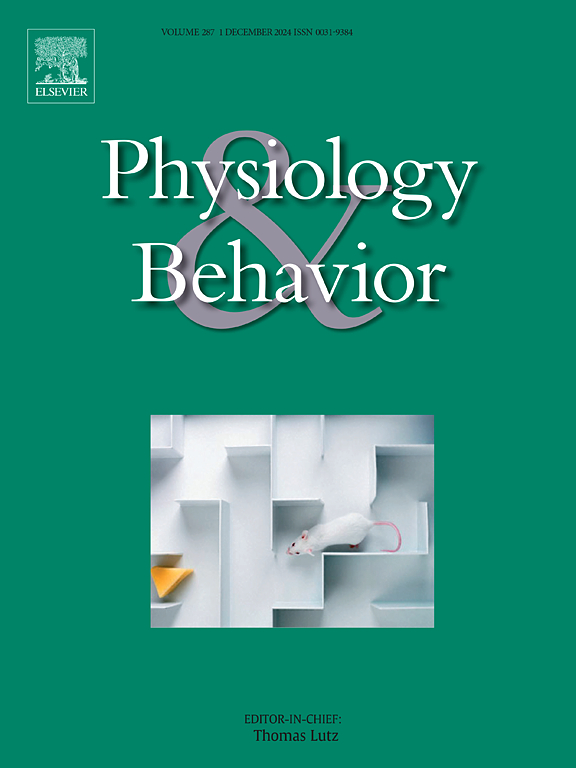The use of infra-red thermography to study emotions of wild crested macaques (Macaca nigra) in their natural habitat
IF 2.4
3区 医学
Q2 BEHAVIORAL SCIENCES
引用次数: 0
Abstract
Infra-red thermography (IRT) has been validated across a range of taxa as a non-invasive method to quantify physiological changes (variation in skin temperature) that serve as a proxy for emotional arousal in humans and other animals. While its effectiveness has been demonstrated in captivity, its application in wild animals under natural conditions remains underexplored. This study validates IRT in wild crested macaques (Macaca nigra), observed in their natural habitat, to assess its potential for studying short-term emotions as proximate mechanisms of behavior of wild animals. Seventy-five playback experiments and predator model presentations were conducted on 14 adult females, exposing them to stimuli including affiliative grunts, contact calls, aggressive screams, alarm calls, and python models. The objectives were to: (1) evaluate whether environmental and physical factors, such as atmospheric conditions and camera-subject distance, impact thermal measurements; (2) determine whether facial skin temperature variations reliably indicate emotional arousal and valence in response to ecologically relevant stimuli; and (3) explore correlations between temperature changes and behavioral indicators of arousal, such as physical activity and self-directed behaviors. Results showed that: (1) environmental and physical factors did not significantly affect thermal measurements when following our protocol; (2) facial skin temperature changes reliably reflected the intensity of emotional arousal elicited by different stimuli; and (3) temperature variation was associated with behavioral indicators of arousal and anxiety. These findings establish IRT as a reliable tool for investigating emotion-driven skin temperature changes in wild primates, providing valuable insights into the role of short-term emotions in shaping behavior
利用红外热成像技术研究野生冠猕猴(黑猕猴)在自然栖息地的情绪。
红外热成像(IRT)作为一种非侵入性的方法,已经在一系列分类群中得到了验证,可以量化人类和其他动物的生理变化(皮肤温度的变化),作为情绪唤醒的代理。虽然它的有效性已在圈养中得到证明,但在自然条件下对野生动物的应用仍有待探索。本研究验证了IRT在野生冠猕猴(Macaca nigra)的自然栖息地观察,以评估其作为野生动物行为近似机制研究短期情绪的潜力。研究人员对14只成年雌性进行了75次回放实验和捕食者模型展示,并将它们暴露在包括亲昵的咕噜声、接触叫声、攻击性尖叫、警报叫声和蟒蛇模型在内的刺激下。目标是:(1)评估环境和物理因素(如大气条件和相机与受试者的距离)是否会影响热测量;(2)确定面部皮肤温度变化是否可靠地指示对生态相关刺激的情绪唤醒和效价;(3)探讨温度变化与生理活动、自我导向行为等唤醒行为指标的相关性。结果表明:(1)环境和物理因素对热测量结果的影响不显著;(2)面部皮肤温度变化可靠地反映了不同刺激引起的情绪唤醒强度;(3)温度变化与唤醒和焦虑行为指标相关。这些发现确立了IRT作为研究野生灵长类动物情绪驱动的皮肤温度变化的可靠工具,为短期情绪在塑造行为中的作用提供了有价值的见解。
本文章由计算机程序翻译,如有差异,请以英文原文为准。
求助全文
约1分钟内获得全文
求助全文
来源期刊

Physiology & Behavior
医学-行为科学
CiteScore
5.70
自引率
3.40%
发文量
274
审稿时长
47 days
期刊介绍:
Physiology & Behavior is aimed at the causal physiological mechanisms of behavior and its modulation by environmental factors. The journal invites original reports in the broad area of behavioral and cognitive neuroscience, in which at least one variable is physiological and the primary emphasis and theoretical context are behavioral. The range of subjects includes behavioral neuroendocrinology, psychoneuroimmunology, learning and memory, ingestion, social behavior, and studies related to the mechanisms of psychopathology. Contemporary reviews and theoretical articles are welcomed and the Editors invite such proposals from interested authors.
 求助内容:
求助内容: 应助结果提醒方式:
应助结果提醒方式:


